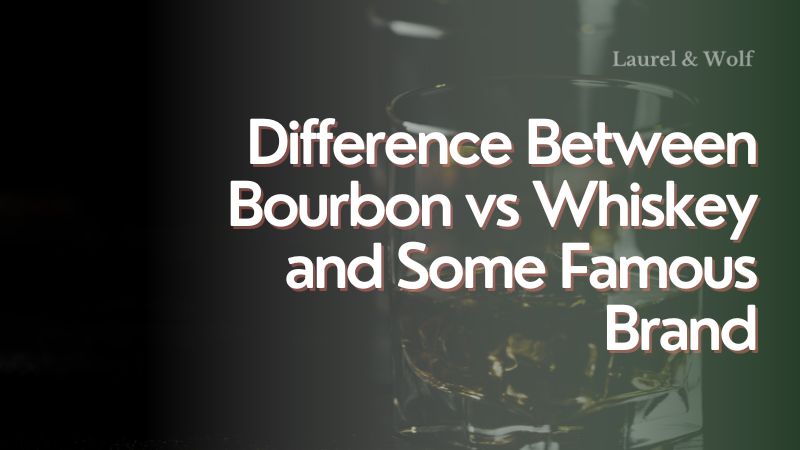Are you a fan of both bourbon and whiskey, possibly enjoying them best when served neat? However, were you aware that, even though they’re often produced from the same ingredients and usually aged in barrels, there is a notable distinction between bourbon and whiskey?
The differences come in rules that govern how bourbon and whiskey, like Scotch or Japanese whisky (which we’ll get into below), can be labeled as such. Today’s post will give you all the basics of what sets these two apart so that when you go out drinking with friends next time, you’ll have an informed opinion about what drink everyone should order!
What is Bourbon?
Believe it or not, the reason you know what bourbon is has a lot to do with taxes. Bourbon was first recognized in 1958 because of the dominance of these laws and its production in Kentucky.
To be considered bourbon, however, there are certain rules that must be followed:
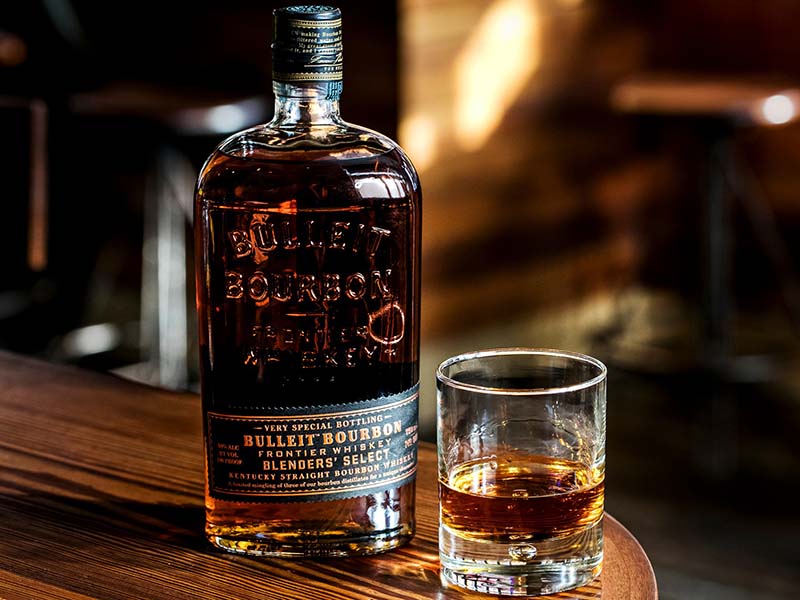
US law requires that bourbon must meet the following criteria:
- It must be made from at least 51 percent corn (in practice most bourbons contain about 70 percent).
- It must be distilled to no more than 160 (U.S.) proof (80% abv) – distillers actually distill it to 125 (U.S.) proof (62.5% abv), known as ‘barrel proof’.
- Bourbon must be aged for a minimum of two years in new, charred oak barrels.
- It may not be – other than coloring – flavored with anything other than pure natural water.
Bourbon can only contain a certain amount of ‘fusel alcohols’ which are the source of flavor and aroma. Typically American bourbons have more fusel alcohols than Scotch whisky because they’re distilled at higher proof and then watered down to bottling strength whereas most Scotch is distilled just once and bottled at around 63% abv (cask strength). Bourbons typically range from 40-50% abv compared to cask strength single malts which range from 55-60% abv.
Bourbon can be distilled anywhere in the United States, but the vast majority is produced in Kentucky. After a few decades of producing bourbon, distilleries often move on to other spirits such as rye whiskey or brandy and reopen with new equipment to meet current demand. Of course, this means that some old brands do not actually use bourbon made on-site anymore! The list of distilleries that no longer produce their own bourbon would include Maker’s Mark (construction underway!) and Jim Beam (owned by Japanese company Suntory).
What is Whiskey?
Whiskey covers everything else: it includes Scotch whisky, Japanese whisky, and just plain ‘whisky’. It also includes American blended whiskey. While bourbon must be aged for a minimum of two years, whiskey may not have an age statement at all.
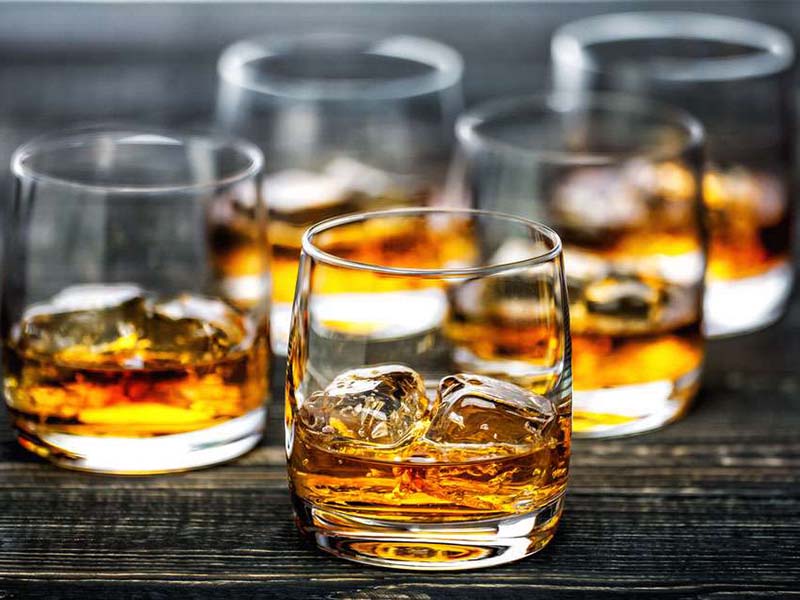
Whiskey is also produced from various grains such as rye, wheat, and corn as well as malted barley. In the case of Scotch whisky, it must meet certain other criteria:
- It must be made from water and malted barley – that’s it – no corn or other adjuncts are allowed.
- It must be mashed, distilled and then aged in oak casks – just like bourbon!
- Historically, Scotch whisky had to be made entirely in Scotland but now companies can use a ‘traditional method of production which allows them to move their new make spirit around Scotland until it’s ready to be distilled.
- Scotch whisky must be bottled at a minimum of 40% abv, unlike bourbon which is bottled at no less than 80 proof (40% abv).
In Japan, the rules are slightly different: there is a distinction between ‘pure’ and ‘blended’ whisky. Kavalan from Taiwan recently became the first non-Japanese producer to win an award for its single malt in the country’s national awards while Beam Suntory’s Yamazaki has won many international awards.
The blender in Japan works much like you would expect, combining various types of whiskies together before bottling them. The blend can contain both grain and malt whiskies as well as older whiskies that have been aged in different types of cask.
The quality of blended whisky in Japan is exceptional, especially compared to other countries where production comes down to a price rather than the artistry of the blender. Like Scotland, all Japanese malt whisky must be distilled using pot stills and it also has to be aged in oak casks for at least three years.
Bourbon vs Whiskey: What’s The Difference?
If you’ve made it this far, the difference between bourbon and whiskey might still sound a little technical. Let’s break it down simply:
- Bourbon is an American whiskey made from at least 51% corn in addition to other grains.
- Whiskey can be any made anywhere in the world but must meet certain criteria in order to call itself Scotch whisky or Japanese whisky. For scotch, that includes using only water and malted barley as well as aging for a minimum of three years. For Japanese whisky, only barley can be used along with strict production rules including distillation using copper pot stills before being aged for three years in neutral oak casks.
As you can see there really isn’t much difference between the two when all is said and done. The biggest takeaway here? All bourbon has to be whiskey, but not all whiskey is bourbon!
Some Brand Bourbon and Whiskey Famous
Bourbon
- Pappy Van Winkle’s Family Reserve
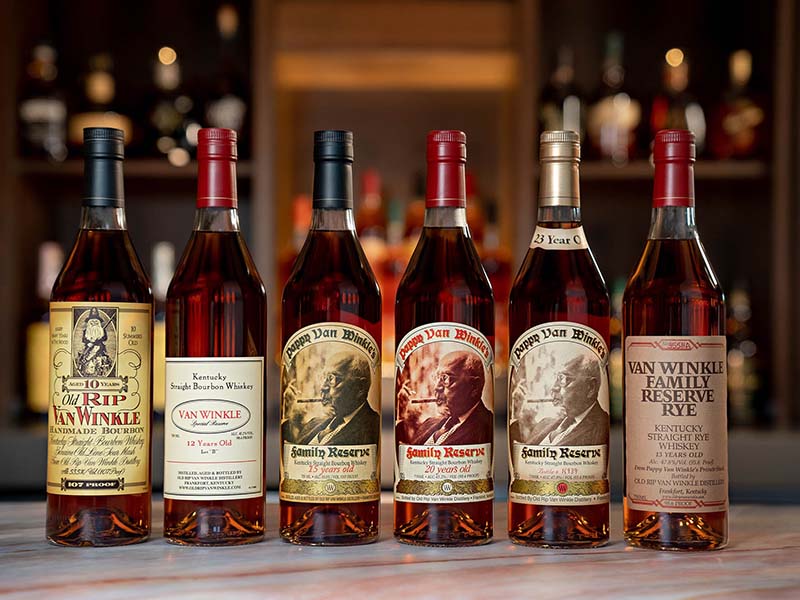
Pappy Van Winkle’s Family Reserve is one of the most difficult bourbons to find. If you haven’t heard of it before, then you probably haven’t tried it either, since most high-end liquor stores are sold out within an hour after getting a new shipment in.
You see, Pappy Van Winkle is aged for at least 10 years (though some say it’s more like 12 years), and the bourbon is only made in limited batches. What that means for whiskey-lovers is that since each batch is so small, it’s rare to see Pappy Van Winkle on shelves at all.
- Booker’s
Booker’s Kentucky Straight Bourbon Whiskey is one of the few bourbons that are not produced by a distillery, but instead are crafted by individual producers.
There’s only 6-8 barrels per batch, which are aged for 6-7 years before being sealed up in a wooden barrel with no label or indication of what kind of bourbon you’ve got.
The labels are put on by the distributors once they receive their allocation.
So, if you can’t find Pappy Van Winkle’s Family Reserve, but do come across Booker’s Bourbon, then it may be worth a shot.
Of course, it depends on your taste preference as well…
If you’re used to smoother bourbons like Makers Mark or Woodford Reserve, then maybe give this one a miss. But if you enjoy Wild Turkey or Bulleit bourbon instead of the more expensive options, then give Booker’s bourbon a try!
- Eagle Rare
Eagle Rare is an American single barrel bourbon whiskey distilled in Lawrenceburg, Kentucky and marketed by The Sazerac Company.
I’ve tried Eagle Rare before and it’s a really good value, so if you’re looking for a smooth sippin’ whiskey that won’t break the bank, this has got to be one of your top choices!
- Blanton’s Single Barrel Bourbon Whiskey
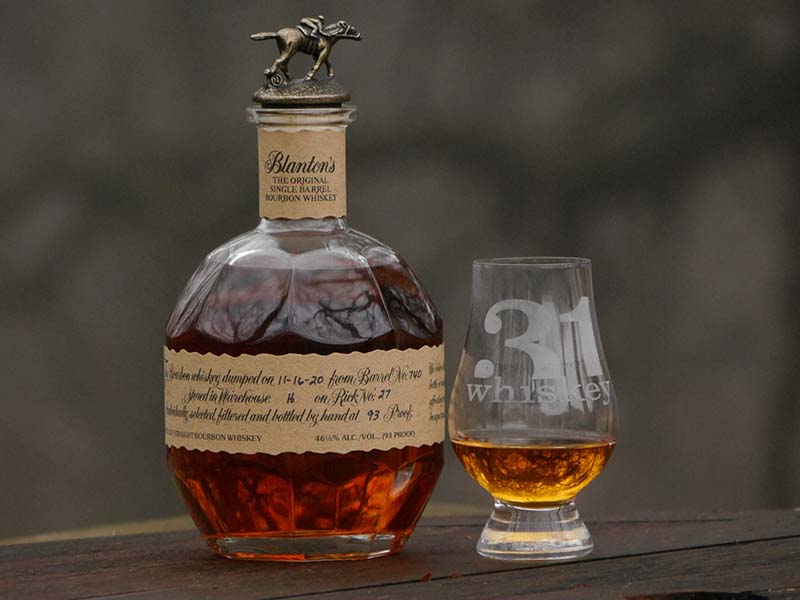
Blanton’s is made using the original Sour Mash process, patented by Col. Blanton in 1840. This patent still stands as the oldest distilling license in the United States.
If you want to try one of the best, then give this single barrel whiskey a shot! It’s got a bold taste that I quite like for special occasions… if you don’t mind spending top dollar on an upper end bourbon brand!
- Bulleit Bourbon Kentucky Straight Bourbon Whiskey
Bulleit is a small batch bourbon made by Diageo North America, which began production in 1987. They are the same folks who make Crown Royal Canadian Whiskey and Smirnoff now as well.
If you like Wild Turkey but want something with a smoother taste (and less expensive), then try this one out! It’s still got that spicy kick to it without being overpowering, and I think most people would be happy with how it makes them feel.
- Four Roses Small Batch Bourbon Whiskey
Four Roses Small Batch was introduced first in limited quantities beginning in 1984. The label was redesigned and the bourbon sold more widely starting in 1992, but other than that it’s still exactly the same as it ever was.
If you’ve got a taste for something different, then Four Roses might be right up your alley! This is one of those bourbons that I actually think is really good, so if you’re feeling adventurous, go ahead and give this one a try!
Whiskey
- Yamazaki Single Malt Whisky
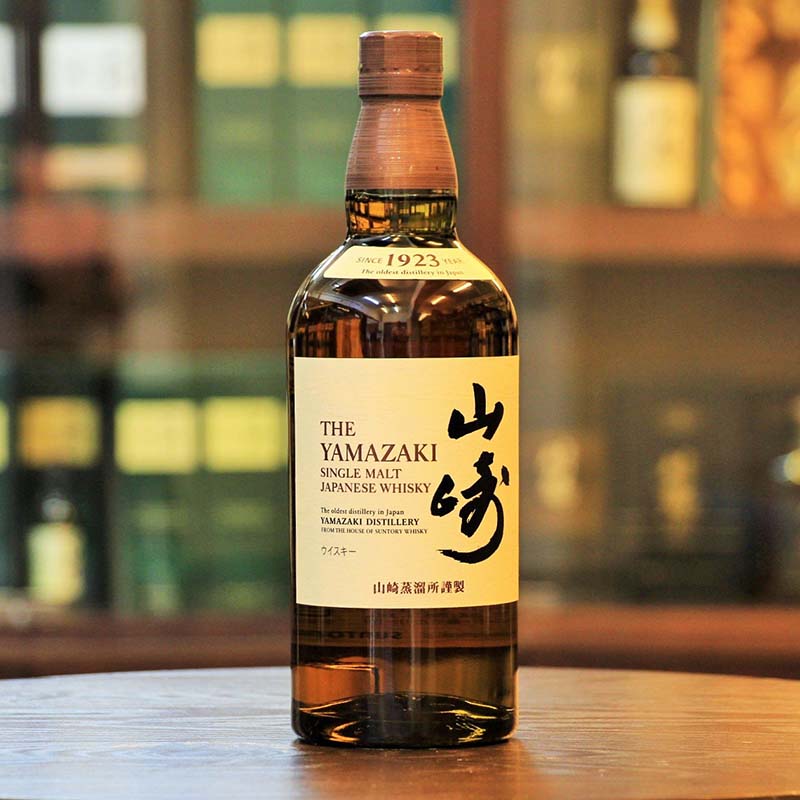
Yamazaki Single Malt Whisky is one of Japan’s most famous whisky brands. The Yamazaki distillery located in Shimamoto Town, Osaka Prefecture is where it all began for this iconic spirit. Although popularly associated with Scotch whiskies, single malt whisky can be produced anywhere in the world and it would be unfair to say that Yamazaki Single Malt Whisky even closely resembles any of its Scottish counterparts.
- Hakushu Heavily Peated Single Malt Whisky from Japan
Hakushu Heavily Peated Single Malt Whisky also produced in Shimamoto Town, Osaka Prefecture is an expression that completely diverges from the Yamazaki brand. As you can imagine, heavily peated whiskies are quite polarizing among whisky lovers. There are some who see them as a masterpiece while others perceive them to be nothing short of abhorrent.
Nevertheless, I think it’s safe to say that Hakushu Heavily Peated Single Malt Whisky has carved out its own niche within the single malt market and has become quite popular over the years. For this review I sampled the 25 year old non-chill filtered expression which was bottled at 46% ABV.
- Kavalan Concertmaster Single Malt from Taiwan
Kavalan Concertmaster Single Malt from Taiwan’s King Car distillery is a heavily peated whisky that was matured in ex-bourbon barrels. It’s bottled at the rather high strength of 59% ABV and doesn’t contain any information about its actual age. The Kavalan distillery has been producing single malt since 2008 but it wasn’t until late 2010 that their whiskies started to be exported into Europe and America.
- Johnny Walker Blue Label Scotch Whisky from Scotland
Johnny Walker Blue Label Scotch Whisky from Scotland is a blend that contains both malt and grain whiskies. It was released in 1990 to celebrate 200 years of “the blending family”. The expression has been finished in casks that previously held former Taylor’s Quinta Ruban whisky, which is also heavily peated and produced at the Girvan distillery (located on the same site as Springbank).
Conclusion
Bourbon and Whiskey are two of the most popular drinks in America. They’re both made from similar ingredients that you might not have known about, though they differ slightly in taste profile because one is distilled before being aged while the other is distilled after aging for a period.
While there’s no right or wrong answer when it comes to which drink you prefer, we hope this post helped clear up some confusion around these American favorites. What do you think? Which of these drinks would your choose if given the choice between them? Let us know by commenting below today’s article!

